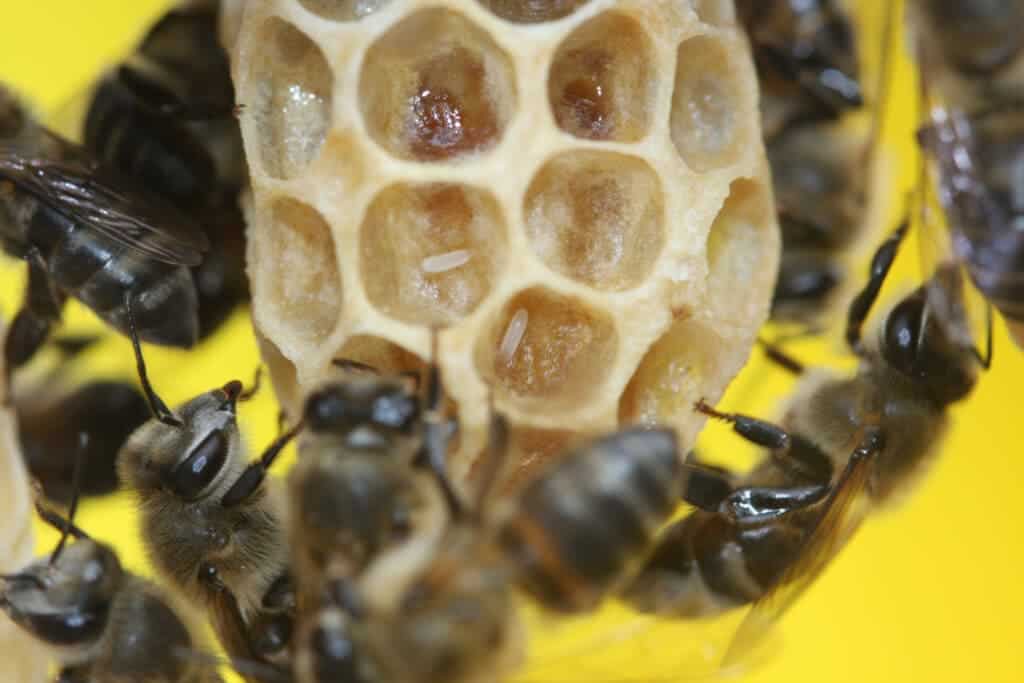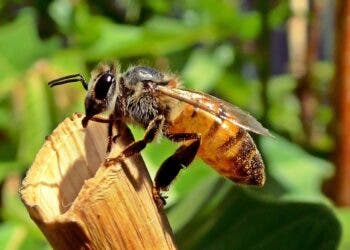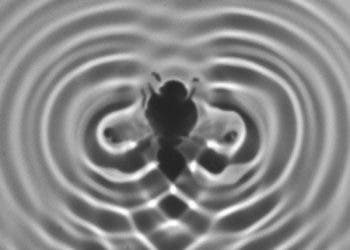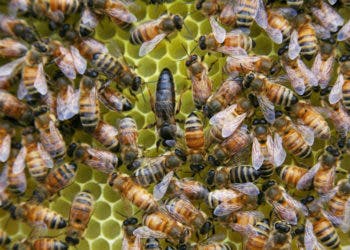
Australian researchers at the University of Sydney have solved a puzzle that has been fascinating biologists for decades. In a new study published this week, they described a single gene that enables Cape honeybees to reproduce without having sex.
“It is extremely exciting,” said Professor Benjamin Oldroyd, who is a behavioral geneticist at the University of Sydney’s School of Life and Environmental Sciences and a co-author of the paper. “Scientists have been looking for this gene for the last 30 years. Now that we know it’s on chromosome 11, we have solved a mystery.”
Sex persists as a dominant mode of reproduction because it allows for sexual selection. This helps to minimize the buildup of mutations seen in all-female asexual populations.
Before sex evolved all reproduction was done asexually, which entails cellular division – an organism splits in half to form two new ones.
“Sex is a weird way to reproduce and yet it is the most common form of reproduction for animals and plants on the planet. It’s a major biological mystery why there is so much sex going on and it doesn’t make evolutionary sense. Asexuality is a much more efficient way to reproduce, and every now and then we see a species revert to it,” Oldroyd said in a statement.
The Cape honey bee (Apis mellifera capensis) is a subspecies of the European honey bee (Apis mellifera) and is native to the Eastern and Western Cape provinces of South Africa. In their ecosystem, these insects play a major role as pollinators, just like other strains of honeybees.
While still retaining the characteristic honeybee striped abdomen, the Cape honeybee is darker in color compared to other honeybees.
The lifecycle of a Cape honeybee begins with the queen bee laying an egg in each cell in the comb of the hive. The eggs hatch into grub-like larvae, which are fed and taken care of by nurse worker bees. A week later, the larvae develop into pupae, before emerging as adult bees one week later.
Cape honeybees are unique among their honeybees because workers can lay diploid female eggs, instead of the normal male eggs that other honeybees lay.
“Males are mostly useless,” Professor Oldroyd said. “But Cape workers can become genetically reincarnated as a female queen and that prospect changes everything.”
While it has its benefits, this behavior also introduces conflict in what should have otherwise been a cooperative society. Since any worker can be genetically reincarnated as the next bee, this creates inherent friction between workers that often fight among themselves for the coveted spot of mother to the next queen.
These traits also lead to a propensity for social parasitism. Cape honeybees often invade the foreign colonies of African honeybees, which can impact their numbers and even cause their collapse. This has been thoroughly documented previously in parts of South Africa where the Cape honeybee was introduced in areas north of the country.
It’s believed that at least 10,000 colonies of commercial beehives collapse each year due to invasions of Cape honeybees.
For three decades, scientists have sought to understand the genetics that underly the Cape honeybees’ unique reproduction. Writing in the journal Current Biology, Oldroyd and colleagues report that a single gene, known as GB45239 on chromosome 11, is responsible for the virgin births.
“Further study of Cape bees could give us insight into two major evolutionary transitions: the origin of sex and the origin of animal societies,” Professor Oldroyd said.
What’s more, the discovery might one day be used to genetically engineer high-yield crops and useful biotech.
“If we could control a switch that allows animals to reproduce asexually, that would have important applications in agriculture, biotechnology and many other fields,” Professor Oldroyd said. For instance, many pest ant species like fire ants are thelytokous, though unfortunately it seems to be a different gene to the one found in Capensis.”






